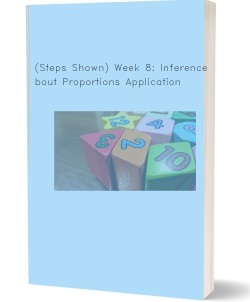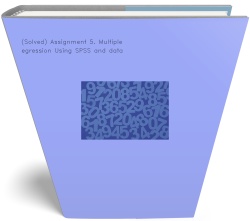Answer the following questions. Copy and paste any required data charts or summaries into this Word document.
Answer the following questions. Copy and paste any required data charts or summaries into this Word document. Use additional space as needed. Be sure to include your name on the document and in the file naming convention. This exam is open book and open notes.
- Paired Sample Design: 3 0 pts
Download the data set bph-samp.sav and use SPSS to complete the following calculations:
- Run a paired t test to compare if there is a mean change in QoL at the baseline and at 3 months.
- Run a one-sample t test to test the same hypothesis as in (1) but on the variable DELTA.
- Check if the QoL at the baseline and at 3 months follow Normal distributions.
- If you have a concern about the small sample size and perhaps non-normal data, choose an appropriate nonparametric test to compare the median QoL score at the baseline and at 3 months. (Hint: You need to research nonparametric tests.)
II. Independent Sample Design: 3 0pts
Download the data set lactation.sav and use SPSS to complete the following calculations.
- Produce a side-by-side boxplot for the percentage of bone loss in the breast feeding group vs. the control group.
- Produce a side-by-side histogram for the percentage of bone loss in the breast feeding group vs. the control group. (Hint: You need to search for SPSS functions not covered in the lecture to produce the histograms side-by-side.)
- Test if the mean percentage of bone loss in the two groups are the same using the right version of the t test based on the SPSS output.
- Calculate a 95% confidence interval for the mean difference in the percentage of bone loss between the two groups.
III. Cross-Tabulation: 3 0pts
Download the data set bd1.sav and use SPSS to complete the following calculations.
- Test the association between esophageal cancer and alcohol consumption (using the original alcohol consumption variable). Write down the hypotheses, the test used, the p -value and the interpretation.
- Is there a need to use Fisher’s Exact test? Why?
- Test the association between esophageal cancer and alcohol consumption (using the dichotomized alcohol consumption variable). Write down the hypotheses, the test used, the p -value and the interpretation.
- Hand calculate a 95% CI for the odds ratio estimate in (3).
V. Multiple Linear Regression: 3 0pts
Download the data set hdur.sav and use SPSS to complete the following calculations.
- Fit a multiple linear regression model for predicting the hospital duration using age, sex, body temperature, white blood cell counts, antibiotic use, blood culture and service (medication vs. surgery). Using a cut-off value of 0.10 to assess the significance of the predictors. Identify all significant predictors.
- Assess the model fit for the multiple linear regression model using appropriate statistics and graphics.
- Assess the assumptions of linear regression in this data using appropriate statistics and graphics.
- Identify outliers and influential observations using appropriate statistics that can be generated in SPSS. (Hint: You need to do your own research because this is not covered in the textbook or lectures).
Deliverable: Word Document



![[Solution Library] Here’s the assignment. We’ve been instructed to define [Solution Library] Here’s the assignment. We’ve been](/images/solutions/MC-solution-library-81000.jpg)

![[All Steps] Treatment Placebo 12 8 10 5 6 9 9 4 15 6 12 14 We wish [All Steps] Treatment Placebo 12 8 10](/images/solutions/MC-solution-library-81002.jpg)

